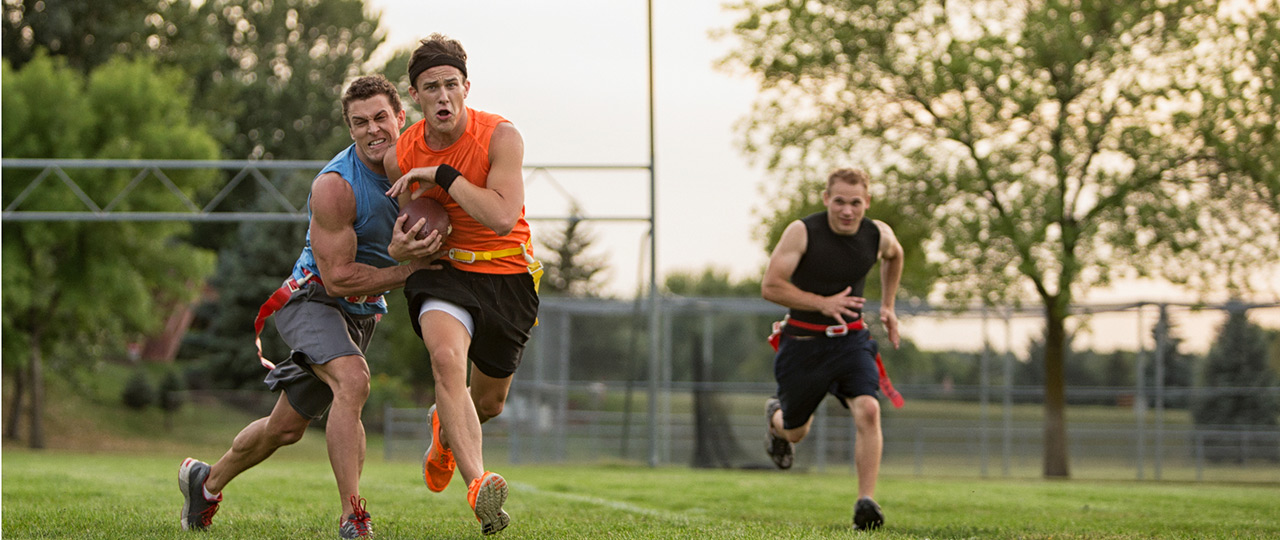College athletes are at high risk for carrying this potentially deadly supergerm.
College athletes in contact sports are more than twice as likely to carry the dangerous superbug MRSA (methicillin-resistant Staphylocuccus aureus) than peers playing non-contact sports.
In a Vanderbilt study released in 2014, football, soccer and other contact sport athletes were found to have MRSA on their bodies, usually in their noses and throats, even if they didn’t show signs of infection. As MRSA carriers, they are at higher risk for infection and more likely to spread MRSA, which can cause serious and even fatal infections.
Colonization with MRSA ranged from 8 to 31 percent in contact sports athletes during the two-year study. This compares with 0 to 23 percent of non-contact athletes.
Roughly 5 to 10 percent of the general population is colonized with MRSA.
MRSA is a leading cause of skin and soft tissue infections, which often heal on their own or are easily treated.
But the invasive form of MRSA can cause pneumonia and infections of the blood, heart, bone, joints and central nervous system. This form kills about 18,000 people every year. It’s an ongoing problem in the NFL, for example — most recently as New York Giants tight end Daniel Fells endured a series of surgeries in an effort to save his foot. He was diagnosed with a MRSA infection after an ankle injury. Invasive MRSA is difficult to treat because standard antibiotics may be ineffective, and physicians often must turn to powerful antibiotics delivered via IV.
“This study shows that even outside of a full-scale outbreak, when athletes are healthy and there are no infections, there are still a substantial number of them who are colonized with these potentially harmful bacteria,” said lead study author Natalia Jimenez-Truque, Ph.D., a research instructor in Pediatric Infectious Diseases.
Athletes can decrease the spread of MRSA by practicing good hygiene:
- Wash hands frequently.
- Don’t share towels.
- Don’t share personal items, such as soap or razors.
Athletes at the high school level or younger can pick up MRSA, too — as can any child with a cut or scrape. Recognize the signs of MRSA and get your child medical attention if you notice these.
The Vanderbilt study was the first to observe college athletes who were not part of a larger MRSA outbreak.
Researchers followed a total of 377 varsity athletes, men and women, who played 14 different sports. They compared the 224 athletes playing contact sports — such as football, soccer, basketball and lacrosse — with the 153 athletes in non-contact sports, including baseball, cross country and golf. Each athlete had monthly nasal and throat swabs over the course of two academic years.
The study found contact athletes acquired MRSA more quickly and harbored the bacteria longer than non-contact athletes, likely because they have frequent skin-to-skin contact that can lead to cuts and scrapes that allow the bug to colonize the body.
“Skin is our first defense against bacterial infections. Therefore, one of the most effective things athletes can do is simply cover areas of broken skin, such as turf burns,” said senior author Buddy Creech, M.D., MPH, associate professor of Pediatric Infectious Diseases.
“Staph is a problematic germ for us — always has been, always will be — and we need to do all we can to reduce the risk of infection in those at highest risk, such as college athletes,” Jimenez-Truque said.
Craig Boerner is media director, national news director and a senior information officer for Vanderbilt University Medical Center. This article first appeared in the Vanderbilt Reporter on Oct. 9, 2014.

